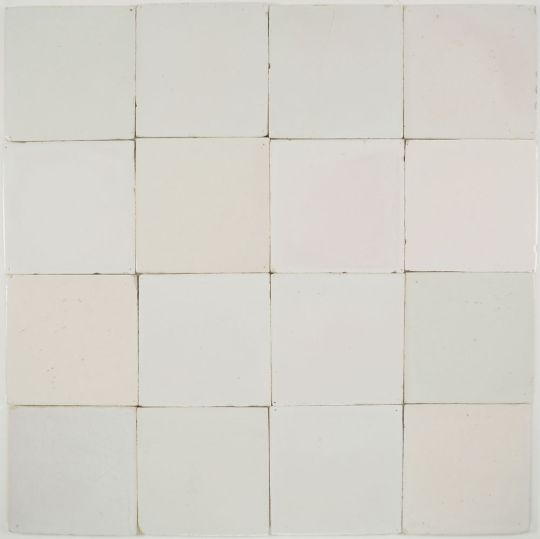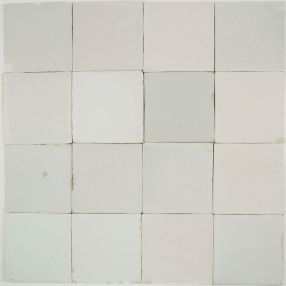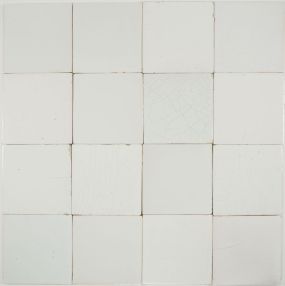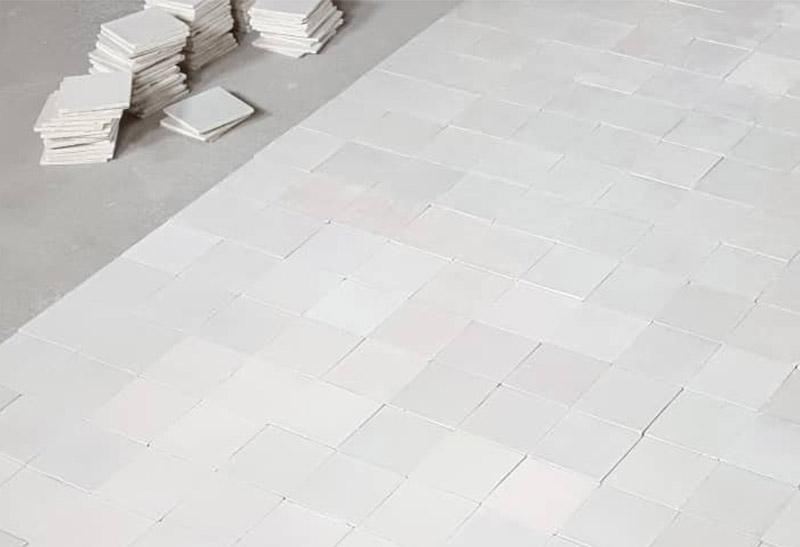Overview
These plain white Delft wall tiles, known as witjes, were produced in Utrecht from the late 18th century into the first half of the 19th century. They are recognisable by their slightly larger size and their softer off-white tone, which leans subtly toward a warm, sandy hue. Compared to the cooler greyish shades of many classic witjes, Utrecht tiles have a gentler, lighter appearance that brings a calm and refined look to any interior. Because these tiles share the same clay body, glaze and size as Utrecht-made decorated wall tiles and murals, they are an excellent match for projects using Utrecht designs. As specialists, we also advise clients on which plain tiles pair best with the decorated tiles they plan to use.
Condition and preparation
Each tile is carefully cleaned, desalinated and freed of soot, fully prepared for direct reuse. The condition of Utrecht witjes is most comparable to our 1st quality selection: ranging from perfect examples to those with only minor wear, always selected to meet our high standards. If cut tiles are needed, we can provide pieces with heavier wear at a reduced rate to preserve intact historical examples.
Tile variety and stock
We keep a fluctuating stock of plain Utrecht tiles, though typically in smaller quantities than classic witjes from Holland or Friesland. Natural variation in shade, glaze and surface character is part of their handmade nature, though Utrecht tiles tend to present a softer, more even tone. We can curate selections that work harmoniously with Utrecht-decorated tiles or lean toward preferred tonal ranges, always within the limits of what antique stock allows. Smaller orders are easier to keep closely matched; larger batches may show more variation.
Tile size
Utrecht witjes measure slightly larger than classic witjes: generally around 13.2 × 13.2 cm (approximately 5.2” × 5.2”). Thickness is usually around 7–8 mm (0.3”). These small dimensional differences are typical of Utrecht production and contribute to their distinct regional identity.
A downloadable installation guide is available soon, explaining how to handle size and thickness differences and other practical details during installation.
How to order
You can request a quote directly on this page or contact us for assistance with selection and layout. With decades of expertise in antique Delft tiles, we are happy to curate the right tones and quantities for your project, especially when combining plain and decorated tiles from Utrecht.
Samples
Samples are available on request to review shade, glaze and surface before placing an order.
Product disclaimer
Due to their age and handmade nature, Utrecht tiles show natural variations in tone, glaze and size. While we cannot offer a 100% guarantee, each tile has been carefully prepared to the highest possible standard and meets our quality requirements.
Alternative tiles
- Plain white Classic, 1st quality | 18th / 19th century
- Plain white Classic, 2nd quality | 18th / 19th century
- Plain white, c. 1900 |19th / 20th century
Buyers information
Specifications
| Inventory number | WTS 224 |
|---|---|
| Tile type | Wall tile |
| Century | 18th century, 19th century |
| Production area (city) | Utrecht |
| Made in | the Netherlands |
| Quantity indication (pcs) | 1000+ |
| Size per tile (approx.) | 13.2 by 13.2 cm's / 5.2" by 5.2" |
| Tile thickness (approx.) | 0,7 to 0,8 cm's / 0.3" |
| Quantity per M2 / SF | 60 tiles per m2 / 5.5 tiles per SF |
| Suitable for | Walls, kitchens, backsplashes, ceilings, fireplace surrounds, fireplace interior (when not exposed to open fire), bathrooms. |
| Not suitable for | Floors, open fire, outdoors, wet rooms (shower walls etc.) and swimming pools. |
| Sealer | The tiles do not require a sealer from a functionality perspective. |
| VAT and/or Import duties | Antique tiles are sold within the margin scheme within the Europe Union. Antique tiles that ordered from outside the European are often imported at a special rate (e.g. 5% UK). |
About Regts - Delft Tiles
We are a family firm specialized in Delft tiles. Our stock covers the entire production period, which started around 1570 and ended just after 1900. If you are interested in working with us, please always feel free to get in touch.About usContact us
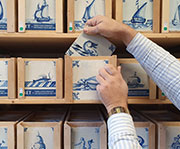

 10 out of 10
10 out of 10